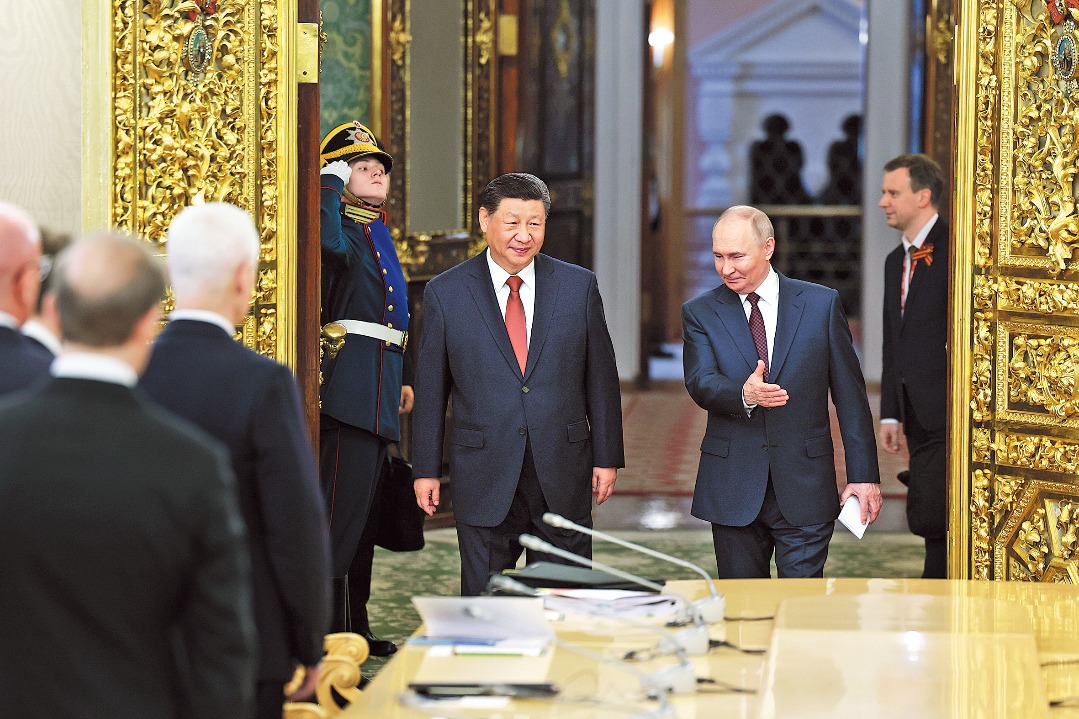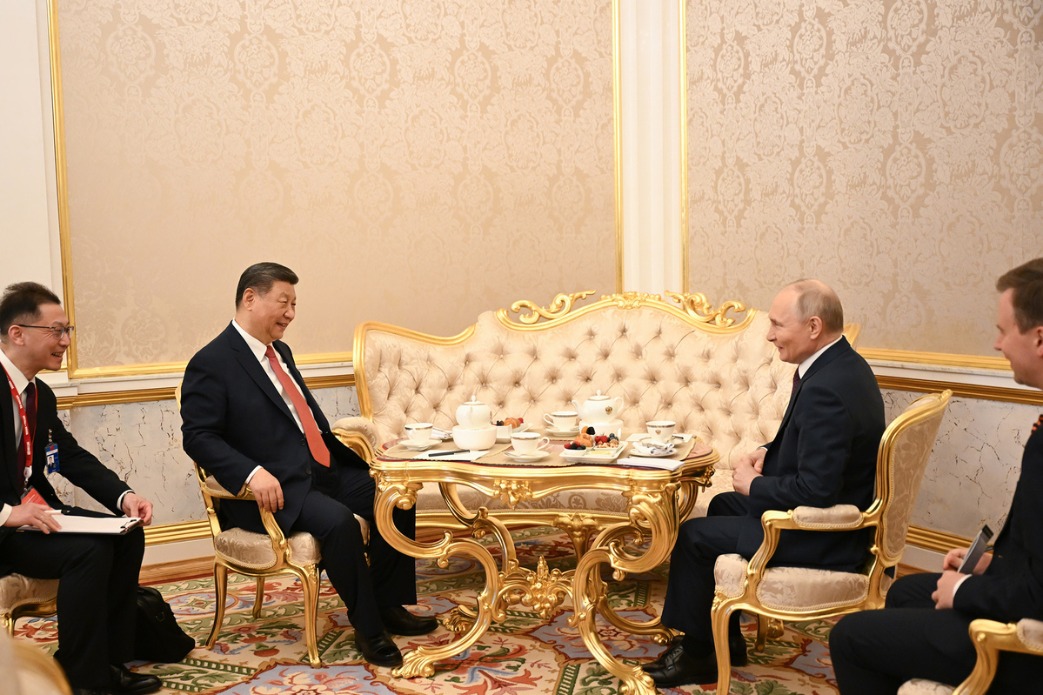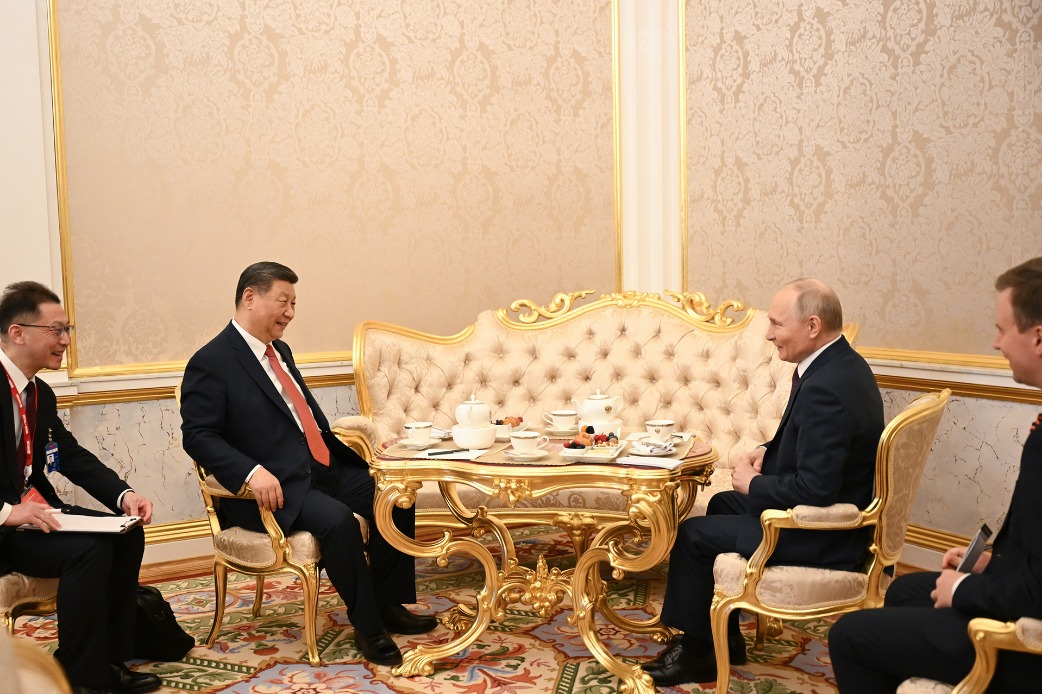RCEP can release potential of region's blue economy


Establishing smooth marine economy connectivity between China and the Association of Southeast Asian Nations will facilitate the sustainable development of both sides and foster the new regional maritime cooperation paradigm of "leading governance through collaboration".
In March 2023, the China Institute for Reform and Development, in collaboration with some think tanks based in ASEAN member states, launched the "Initiative to Promote China-ASEAN Blue Economy Integration". Accelerating the process of establishing maritime-economic connectivity between China and ASEAN and promoting the efficient allocation of marine resources will unlock the growth potential of the regional blue economy, helping build a new pattern of blue economic integration between China and the Association of Southeast Asian Nations.
The deepening trade cooperation between China and ASEAN has strengthened the demand for better, smoother marine economy connectivity between the two sides, especially because maritime transport accounted for more than 94 percent of China's foreign trade and over 60 percent of ASEAN's foreign trade, and 65 percent of China-ASEAN trade in 2023. Hence, the marine economy has become particularly crucial for the sustainable development of both China and ASEAN.
Since the marine economy contributed only 7.9 percent to China's GDP compared with about 20 percent to ASEAN's GDP, the two sides need to leverage connectivity to use their complementary advantages to develop a "blue engine" for economic growth.
However, ASEAN member economies lag in infrastructure development. For instance, ASEAN economies account for only three of the world's top 20 ports. Limited port accessibility, the absence of cooperation mechanisms, inefficient customs and border management, below-par logistics service quality are some of the challenges facing ASEAN members.
The marine economies of China and ASEAN are highly complementary, with China enjoying technological advantages in ocean fisheries, infrastructure construction and renewable energy development, while most ASEAN member states enjoy resource and cost advantages. Also, the two sides have similar marine environments and face some common challenges including climate change and marine pollution.
For example, while about 625 million people in ASEAN depend on the sea for their livelihoods, fish stocks in the South China Sea have declined by 70-95 percent since the 1950s. Against this backdrop, the Regional Comprehensive Economic Partnership has unified many trade rules and standards, including those pertaining to the blue economy.
As such, promoting regional maritime connectivity, establishing channels for China-ASEAN marine industry cooperation, and unleashing the potential of the marine economies under the RCEP framework will contribute to the sustainable use of marine resources.
The two sides should also jointly advance port infrastructure construction, renovation and upgrading, establish a China-ASEAN port network for information sharing, unify standards and recognize each other's regulations. They should also provide financial and technological assistance for less-developed ASEAN members to help them improve their port infrastructure and standards, build a "customs cross-border cooperation platform" to enable the exchange of information on inspection, quarantine and certification processes, and develop "smart ports" at key locations.
Establishing regular "multi-stop" international cruise routes, developing specialized tourism projects and expanding regional route networks, using the RCEP's rules on investment to promote investment in fisheries, developing deep-sea and offshore fishing operations and modern aquaculture, setting up joint deep-sea technology laboratories and R&D centers for marine biomedicine and new materials, and advancing marine technology trade liberalization are some of the other areas that call for greater attention from China and ASEAN.
Besides, by the end of 2022, the installed offshore wind energy capacity of ASEAN as a whole accounted for only 0.3 percent of its total installed energy capacity. In sharp contrast, China's offshore wind power grid-connected installed capacity is more than half of the global total.
Therefore, the two sides should explore the possibility of "zero-tariff" transition periods under the RCEP framework for generating offshore wind power, and trading in wind power materials and equipment. The two sides should also leverage RCEP rules to ink bilateral and multilateral free trade agreements to jointly develop free trade energy processing zones and industrial parks and establish environmentally friendly fishing technology standards.
Using the RCEP well and allowing marine products and services to enjoy the benefits of the RCEP agreement will reduce the costs of blue economy cooperation between China and ASEAN.
However, there is a need to upgrade the RCEP's rules of origin from partial to full accumulation for maritime products, recognize the authorized economic operator status of marine enterprises to enable preferential inspection and timely disposal of time-sensitive cargo such as fresh seafood.
China, being a major tourism market, is opening up its marine tourism market and supporting both domestic and ASEAN enterprises to develop South China Sea cruise routes and products primarily targeting Chinese consumers. It is also promoting cooperation in fishery operations, aquaculture technology exchanges and marine biological resource development. The focus is on strengthening aquaculture collaboration, leveraging Chinese capital and technology to explore the joint development of ecological, high-value deep-water cage systems and large-scale intelligent farming operations.
In this context, the island province of Hainan enjoys a strategic position at the "8-shaped" intersection between China's massive domestic market and the Southeast Asian markets. Its geographical advantages, industrial base, cooperation foundation and policy and institutional advantages make it suitable to serve as a vital hub for China-ASEAN regional marine economy connectivity. So China should leverage the Hainan Free Trade Port's zero-tariff policies for inland sales of processed and value-added goods to encourage ASEAN enterprises to invest in seafood processing facilities, build on Yangpu Port's special policies, strengthen cooperation with ASEAN ports and build it into a transportation hub between the two markets.
The key practical measures include establishing ASEAN-oriented "offshore warehouses" at Yangpu Port to reduce the relatively high China-ASEAN maritime logistics costs through coordinated warehouse and distribution models and establish a China-ASEAN marine expo to build the Hainan Free Trade Port into a crucial platform for trade and cultural exchanges between China and ASEAN.
The author is president of the China Institute for Reform and Development.
The views don't necessarily reflect those of China Daily.
If you have a specific expertise, or would like to share your thought about our stories, then send us your writings at [email protected], and [email protected].

































